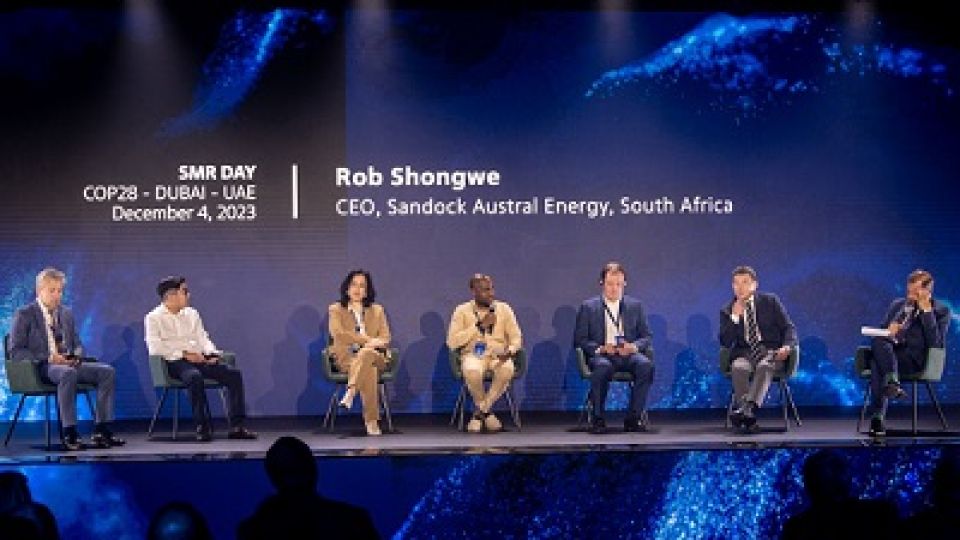DUBAI – ROSATOM State Corporation has presented a full range of technological solutions to achieve climate goals and ensure a low-carbon future.
The Russian firm held the Small Modular Reactors Day (SMR Day) on the sidelines of the COP28 Climate Conference.
For the first time, the SMR Day was held with the support of Rosatom at EXPO-2020.
“We are convinced that nuclear energy will inevitably become the foundation of the low-carbon balance we all strive for,” noted Alexey Likhachev, Director General of Rosatom, in a video address to guests and participants of the SMR Day.
He said low-capacity nuclear power generation, as one of the reliable technological solutions, will occupy a worthy place in the future of nuclear energy.
“I am confident that Rosatom’s proposals in the field of small modular reactors will become an effective and environmentally friendly choice for those countries that, for various reasons, have not considered nuclear generation before.”
Given specific characteristics and diversity of Africa, the existence of remote and isolated areas, SMR-based solutions, including floating and land-based plants with a capacity of up to 300 MW seem suitable for the continent.
SMRs have the same competitive advantages as traditional large nuclear solutions: minimal CO2 emissions, predictable electricity prices, suitability for any weather conditions, and multi-purpose use.
“Energy poverty is reality in Africa as a whole. In South Africa it is even worse because of the load shedding that we are experiencing and advanced level of stages that we are looking at,” Rob Shongwe, CEO of Sadock Austal Energy in South Africa, said.
The event opened with a colourful multimedia show demonstrating the importance of preserving harmony between humans and nature in Yakutia, where Rosatom has started the implementation of a unique low-capacity nuclear power plant project.
The power plant, designed to boost the region’s development, is being constructed with careful consideration for the fragile Arctic ecosystem.
The commissioning of the land-based SMR in Yakutia is planned for 2028. In addition to the presented project, Rosatom’s portfolio also includes the world’s only floating nuclear power plant (FNPP), the “Akademik Lomonosov.”
Since its commercial operation began at the end of 2019, the FNPP has generated over 700 million kilowatt-hours of electricity for Pevek, the northernmost city in Russia. Work is underway on the next- generation floating power unit technology based on the RITM-200 reactors.
It is planned that by 2029, they will start supplying power for the development of the Baimskaya ore zone in Chukotka. Rosatom is also implementing the “Shelf-M” microreactors project with a capacity of up to 10 MW. The first plant based on this technology is expected to be operational by 2030.
There are more than 70 small modular reactor projects in the world in the design stage.
Kirill Komarov, First Deputy Director General for Development and International Business of Rosatom, believes Rosatom is the only technology company that has moved from words to action.
“We are confident that the experience gained in the coming years will allow us to offer our partners around the world the best solutions in the field of SMRs,” Komarov said.
Robert Sogbadji, Director of Renewable and Nuclear Energy at Ghana’s Ministry of Energy, believes SMRs are timely in terms of expansion and visage in the nuclear technology, especially in the period of energy transition.
“For the newcomer countries and developing countries, building SMRs is a good option. They bring energy security and drive away energy poverty,” he said.
– CAJ News

